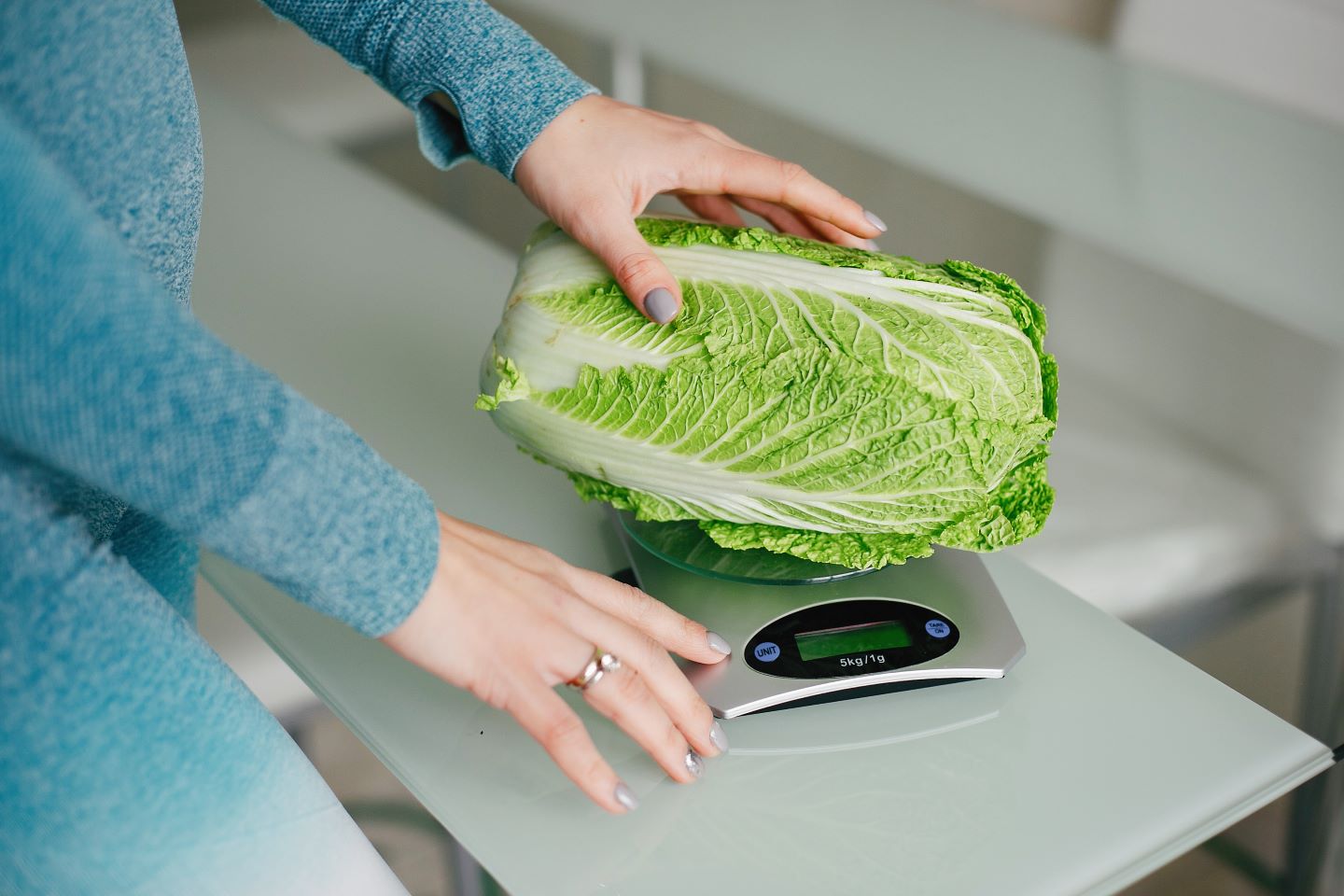What is the maximum cold-holding temperature allowed for shredded lettuce? Prevention from Bacterial Growth

The Maximum Cold-Holding Temperature for Shredded Lettuce: A Food Safety Imperative
Food safety is a paramount concern in the culinary world, and the temperature at which various food items are stored plays a critical role in preventing the growth of harmful bacteria. Shredded lettuce, a common ingredient in salads, sandwiches, and dishes, is no exception. Storing shredded lettuce at the appropriate cold-holding temperature is essential to maintain its freshness and safety. This essay will delve into the significance of cold-holding temperature, explore the recommended guidelines for shredded lettuce, and understand the rationale behind these standards.
Cold-Holding Temperature: A Key Component of Food Safety
Before we delve into the specific cold-holding temperature for shredded lettuce, it’s essential to understand why maintaining the correct temperature is crucial for food safety. Cold-holding, in the context of food preparation and storage, refers to keeping perishable foods at a temperature that inhibits the growth of bacteria, thereby reducing the risk of foodborne illnesses. Food safety authorities and regulatory bodies, such as the United States Food and Drug Administration (FDA), determine the range of acceptable cold-holding temperatures.
What is the maximum cold-holding temperature allowed for shredded lettuce?
According to food safety guidelines, the maximum cold-holding temperature allowed for shredded lettuce is 41°F (5°C) or lower. This temperature range is not arbitrary but is based on scientific research and extensive testing to ensure food safety. Here’s why it matters:
- Bacterial Growth Inhibition: At temperatures below 41°F (5°C), harmful bacteria’s growth is significantly slowed. This is critical for food safety because shredded lettuce, like all fresh produce, can be a breeding ground for bacteria if not stored at the correct temperature. Bacteria such as E. coli, Salmonella, and Listeria can thrive in slightly warmer conditions, potentially leading to foodborne illnesses when consumed.
- Freshness and Quality: Maintaining shredded lettuce at the appropriate cold-holding temperature also helps preserve its freshness, texture, and appearance. Lettuce that is stored too warm tends to wilt and become less appealing, affecting the overall quality of dishes in which it is used.
- Regulatory Compliance: Adhering to the recommended cold-holding temperature for shredded lettuce is not just a matter of best practices but a legal requirement in many jurisdictions. Food service establishments are subject to inspections and regulations that enforce these standards to protect public health.
- Customer Safety: Whether in a restaurant, cafeteria or at home, it is essential to prioritize customer safety. Serving food stored and handled correctly is a responsibility shared by all those involved in food preparation and service.
The Science Behind the Temperature
The choice of 41°F (5°C) as the maximum cold-holding temperature for shredded lettuce is not arbitrary. It is rooted in scientific principles and extensive research into food safety. Let’s explore the science behind this temperature:
- Bacterial Growth: Bacteria multiply rapidly above 41°F (5°C). The “Danger Zone” for food safety, as defined by the FDA, is between 40°F (4.4°C) and 140°F (60°C). Within this temperature range, bacteria can double every 20 minutes, significantly increasing the risk of foodborne illness.
- Listeria monocytogenes: Listeria is a bacterium that can grow at refrigerator temperatures (32°F to 45°F or 0°C to 7.2°C). It is particularly problematic for shredded lettuce and other ready-to-eat foods. Listeria can cause severe infections, especially in vulnerable populations such as pregnant women, the elderly, and those with weakened immune systems.
- Salmonella and E. coli: These are other common foodborne pathogens that thrive in warmer conditions. Ensuring that shredded lettuce is stored at or below 41°F (5°C) helps mitigate the risk of these pathogens contaminating the food.
Real-World Implications
The importance of maintaining the maximum cold-holding temperature for shredded lettuce is not limited to theory; it has practical implications in the food service industry and at home:
- Restaurant and Foodservice Operations: Food safety regulations are enforced through inspections in restaurants, cafeterias, and other food service establishments. Violating cold-holding temperature standards can result in fines, penalties, or even closure in severe cases.
- Home Food Safety: Proper food storage is essential in a domestic setting. Families and individuals should know the recommended cold-holding temperatures and try to store shredded lettuce and other perishable items accordingly to protect their health.
- Catering and Events: In catering and large-scale events, where food may be prepared off-site and transported, adhering to cold-holding temperature guidelines is paramount. This ensures that food served at such gatherings is safe for consumption.
- Commercial Food Production: Food manufacturers and processors must also adhere to these guidelines to ensure the safety of their products. This is especially important for pre-packaged shredded lettuce available in grocery stores.
Adherence to cold-holding temperature standards is a shared responsibility across the entire food supply chain. Everyone involved in food preparation, distribution, and service must be aware of the guidelines and make a concerted effort to follow them rigorously.
Challenges and Considerations
Maintaining the recommended cold-holding temperature for shredded lettuce or any other perishable food comes with its own set of challenges and considerations:
- Temperature Monitoring: Regular monitoring of the storage temperature is essential to ensure that it remains within the safe range. Food establishments use temperature monitoring equipment, while individuals at home can rely on refrigerator thermometers.
- Temperature Variations: Refrigerators and cold storage units can have temperature variations, with some areas being more complex than others. Proper placement of shredded lettuce within the refrigerator is crucial to ensure even cooling.
- Storage Containers: Using appropriate containers and packaging for shredded lettuce can help maintain its freshness and prevent moisture loss, which can affect its quality.
- Rapid Cooling: When shredded lettuce is prepared or received in bulk, it should be rapidly cooled to the appropriate cold-holding temperature. This prevents it from spending too much time in the danger zone.
- Cross-Contamination: Shredded lettuce should be stored separately from raw meat and other potential sources of contamination to prevent cross-contamination.
- Training and Education: Staff in food service establishments should receive training on food safety and temperature management to ensure compliance with regulations.
Conclusion for What is the maximum cold-holding temperature allowed for shredded lettuce?
The maximum cold-holding temperature allowed for shredded lettuce, 41°F (5°C) or lower, is not an arbitrary standard but a well-researched and scientifically supported guideline. It is crucial for inhibiting bacterial growth, preserving the lettuce’s nutrition, freshness, and quality, and ensuring food safety. Adherence to this temperature standard is a legal requirement in many jurisdictions and a responsibility that extends to all those involved in the food supply chain, from restaurants and food manufacturers to home cooks. By understanding the science behind the temperature and the real-world implications of compliance, we can collectively prioritize food safety and protect public health.





